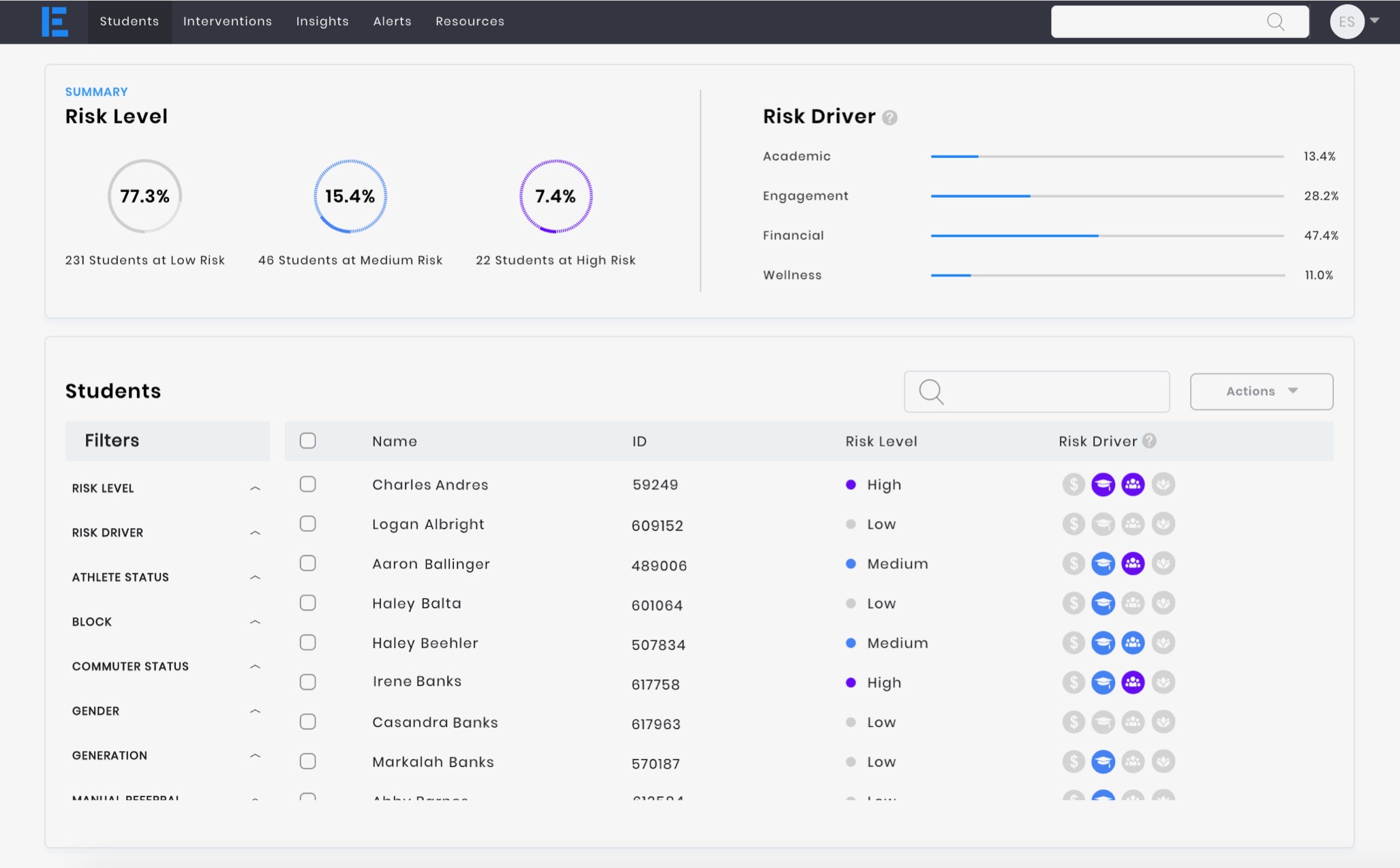While the idea of baring your soul to a chatbot might seem uncomfortable, sisters Claudia and Carolina Recchi think that might be exactly what college students across the United States need right now.
The duo co-founded EdSights in 2017 to support high and medium-risk students to stay in school, and increase university retention rates.
EdSights uses a chatbot, branded under a school’s mascot, to send personalized questions and messages to students to understand their biggest stresses. It then connects them to university resources spanning areas like financial aid, food security and mental health.
As the pandemic has forced millions of students to move off campus and learn from home, the co-founders have found a spurt of growth from colleges looking for new ways to hold onto their students.
And the pandemic has added a new layer of honesty to the answers.
“There is just so much going on with the world, people losing jobs and barely being able to make ends meet. School hardly seems pressing at the moment,” one student wrote. “And yet, grades are still there, determining our future when we aren’t even sure what the future looks like.”
Another wrote, “My work is closed. I have no income.” One said, “Because I am not going out I can’t distract myself from all the things going on in my life.”

Beyond its chatbot, EdSights has a dashboard for administrators to see what percentage of their students are struggling with specific issues at the moment. The company deals with information on high-risk students and their biggest worries, so privacy is key to their platform. EdSights says it complies with both FERPA and GDPR regulation, and does not rent or sell data to third parties. Students also have the right to request an amendment of their records and receive a full log of it.

“Obviously, universities are also spooked that students won’t show up in the fall,” she said. “So they want to make sure that there’s a connectivity and they feel connected to the university, even if they can’t go to campus.”
The company took one year to scale to 16 customers, including Baker University, Missouri Western State, Bethel University, Culver Stockton College and Westminster College. On average its ARR has been growing by 66% month over month, and it has doubled its revenue since February.
EdSights charges colleges $15 to $25 per student. Most customers bring on their entire student body.
“Before this, we did see a lot of universities asking, ‘can I roll this out to freshmen or can I only roll it out to my first-generation students or maybe those that need additional support?’ ” said Carolina Recchi. “Now, colleges are not only asking us to help with all four years, but we’ve had some institutions ask us to roll it out to graduate students, which was new, because we had never done that before.”
This newfound momentum led the co-founders to raise $1.6 million in venture capital funding from a slew of high-profile investors. Investors from this round include Lakehouse VC, Kairos VC and The Fund.
The new raise also includes investments from Warby Parker, Harry’s, Allbirds, Bonobos and Rent the Runway founders.
The EdSights co-founders say COVID-19 played a part in their company receiving inbound interest from generalist investors, who have been historically skeptical about the space, versus solely getting term-sheets from specialist education firms. In fact, the duo had to turn down a number of investors, a stark difference between the chilling effect other founders claim has covered the entire fundraising scene.
EdSights new funding is another data point of how the pandemic is forcing the general public to be more nuanced in how it thinks about the intersection of education and technology.
In the time of a pandemic, a chatbot could be the only way to remotely support millions of students. Now, it’s just up to EdSights to prove that their technology is necessary in a world where schools start to reopen, whenever that is.




